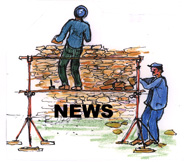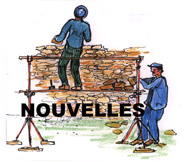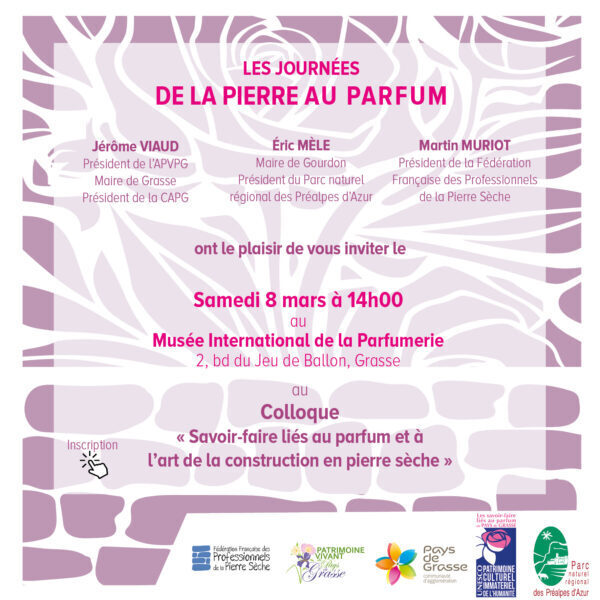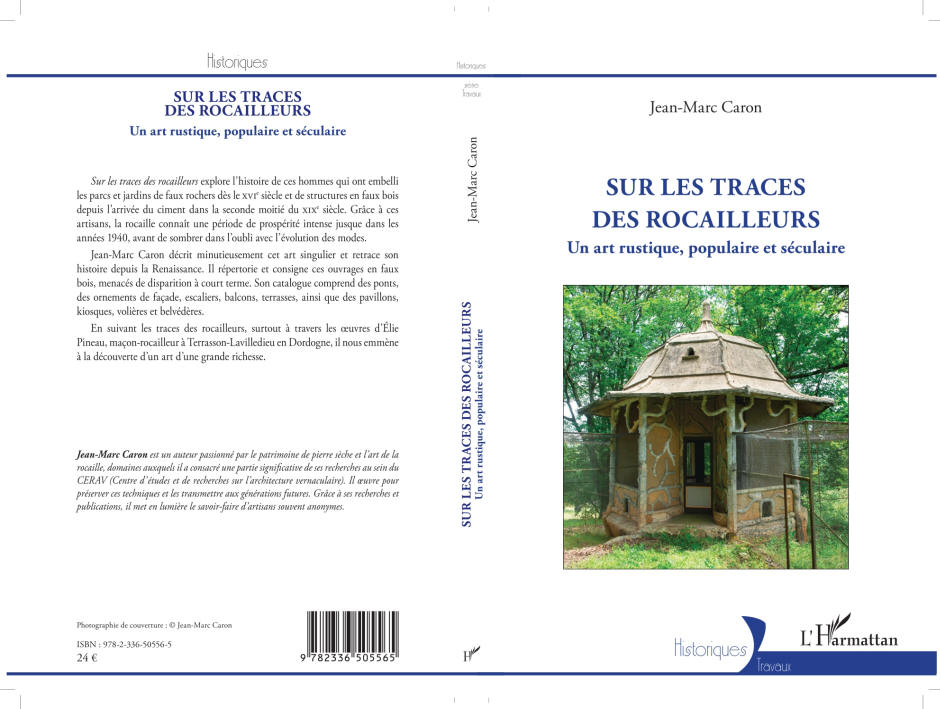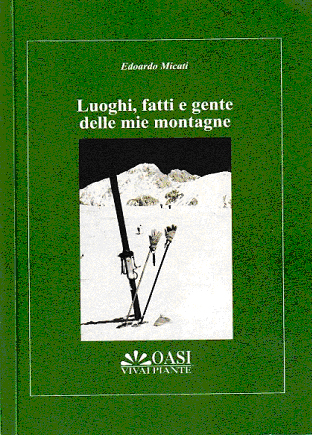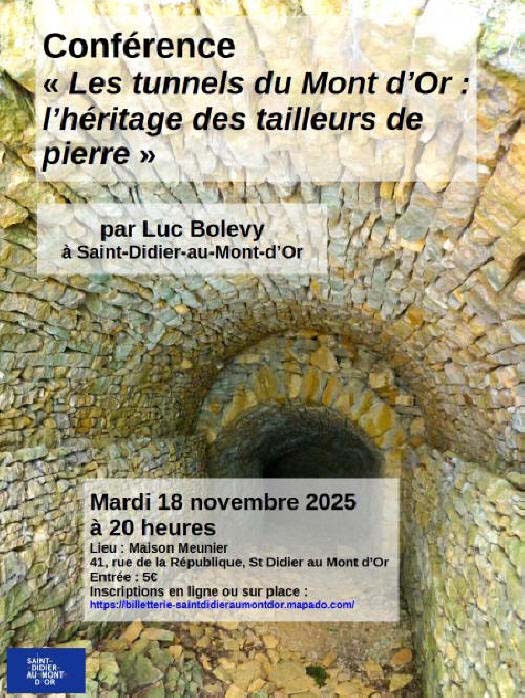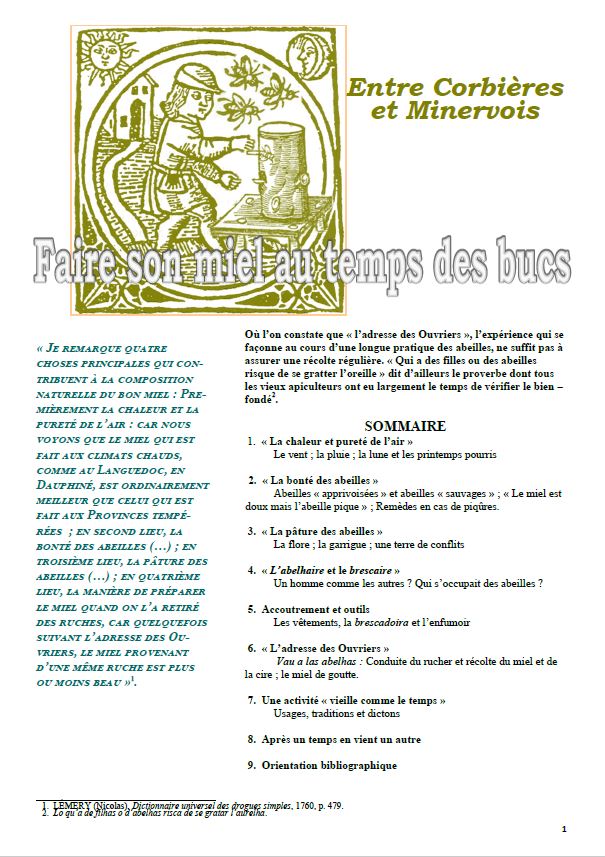1 - Colloque « Savoir-faire lié au parfum et à l'art de la construction en pierre sèche » L'art de la construction à sec (art étant pris au sens traditionnel de « technique ») a été lié ces trois derniers siècles à divers domaines (création de champs, d'enclos, de soutènements, d'abris, etc.) et, partant, à la production de biens essentiellement agricoles, pastoraux, apicoles, horticoles (geniers à céréales, séchoirs de fruits, protection de ruches par exemple).Il semblerait qu'on puisse y ajouter la production de parfum, du moins c'est ce montrera ce olloque.
Pour tous renseignements, consulter l'adresse suivante : https://www.parc-prealpesdazur.fr/actualite/journees-de-la-pierre-au-parfum/
2 - À paraître : Sur la trace des rocailleurs, par Jean-Marc Caron
Membre-corresondant de longue date du CERAV, Jean-Marc Caron nous informe de la parution chez L'Harmattan, de son livre :sur l'art de la rocaille, dont il a évoqué l'histoire en 2020 dans la revue L'Architecture vernaculaire en ligne. On trouvera ci-dessous le facsimilé des pages 1 et 4 de couverture.de ce livre.
3 - Paru : Compte rendu de restauration de l'écluse et des chemins de l'eau du Jardin Clos du Pré Nouveau à Arcens, Ardèche, juin-juillet 2021, par Louis Cagin et Lise Madec
Un type d'aménagement en pierre sèche susceptible d'être remis en état par des murailleurs nous est indiqué par Louis Cagin et Lise Madec (association https://unepierresurlautre.org/ )
Pour lire le compte rendu, cliquer ici..(fichier pdf)
4 - Vient de paraître : Edoardo Micati, Luoghi, fatti e gente delle mie montagne, Arte della stampa Srl - Oasi Vivai Piante, 166 p.
Dans ce nouveau livre, Edoardo Micati évoque les faits, les personnages et les paysages dont « ses » montagnes abruziennes sont riches.
5 - APPEL À COMMUNICATIONS pour le 13e congrès international de la Société d’Archéologie médiévale, moderne et contemporaine (SAMMC) à Rennes, les 28-31 mai 2026
POUR UNE ARCHÉOLOGIE DE L’HABITAT VERNACULAIRE (XVe-XXe siècle)
- autour de la question des conditions naturelles de la construction (qui, sans tomber dans le déterminisme géographique, ne doivent pas être exclues comme cela a pu être parfois le cas) ;
.
Version en anglais
at Rennes (France), May 28-31, 2026 :
ARCHAEOLOGY OF VERNACULAR BUILDINGS (15th-20th c.)
In the final years of the 1970s, under the influence of Anglo-Saxon "vernacular architecture studies", the adjective "vernacular" gradually came to be used in France to designate housing that had previously been called "traditional".
Based on the work of researchers such as Bernard Rudofsky in the U.S., Eric Mercer in the U.K., Christian Lassure in France and François Varin in Canada, the definition of vernacular housing is that a building of popular essence, the fruit of a specific geographical, social, economic and cultural context, adopting largely local architectural models, construction techniques and materials, while being able to assimilate external influences over time as new needs emerge.
The concept of "vernacular buildings" has usefully replaced the concept of "traditional buildings", thus taking much better account of the dimension of chronological evolution as opposed to the fixist and fundamentally achronic dimension of "traditional", even if the adjective "vernacular" is not itself free of difficulties, taking little account of questions of social distinction: the vernacular housing is the housing of the majority, that of the lower or median social strata, but this does not at all exclude the existence of a hierarchy within them.
It has to be said, however, that the notion of "vernacular housing" has essentially been used by researchers - particularly in France - to designate, in a reductive manner, the old rural buildings still visible in elevation in the 20th century, and particularly the peasant buildings that have gradually come to be considered the essential component of so-called "vernacular" architecture. While in quantitative terms, given the proportion of the population represented by peasants (in all their diversity) in Europe up until the Second World War, the peasant dwelling may indeed play this role, it is far from being the only representative, and it is what this conference aims to show.
Although long neglected by scholars, vernacular buildings, in all their variety, represent the vast majority of buildings produced in pre-industrial and even early industrial societies. Initially mass product, these buildings are nonetheless extremely fragile and subject to constant erosion, which has accelerated since the second half of the 20th century. Renovation, often using unsuitable materials, and transformation, more or less haphazardly, to meet the aspirations of contemporary lifestyles, pose a continuing threat to its integrity and preservation.
With a view to exploring the field of post-medieval archaeology, our conference will narrow the scope of its studies to the most recent period, focusing on the 15th to 19th centuries, from the very end of the Middle Ages to the early years of the 20th century.
Even if in the early 1960s, with the creation of the Inventaire général des richesses artistiques de la France, France had already equipped itself with the tools to invest in this field, French archaeologists - a latecomer compared to some northern European countries and North America - have only taken an interest in modern and sub-contemporary vernacular buildings since the end of the 20th century, in close connection with the exponential growth of preventive archaeology, which has led to a continuous renewal of archaeological fields of investigation.
While the notion of "vernacular building" spontaneously conjures up images of the rural world, the conference aims to move beyond this restricted field (which is far from being as studied as it is) to address the issue in the urban world (from market towns to cities) and peri-urban spaces, such as suburbs, whose importance has grown steadily from the end of the Middle Ages to the present day.
The angles of approach can be quite diverse and intersecting, around:
·- the question of the natural conditions of construction (which, without falling into geographical determinism, must not be excluded as has sometimes been the case);
·- the question of the social and economic constraints of construction;
· - the condition of the occupants/builders: from the housing of the servile populations of colonial estates to that of small local elites, whether secular (seigniorial officers, notaries, doctors, etc.) or religious (priests, beguinage…), via that of peasants, craftsmen and shopkeepers or city workers;
·- the question of plan and elevation (bearing in mind the dynamic aspect of the building and its possible evolution, particularly in terms of function);
- the question of materials, their availability and their use;
- the question of the influence of scholarly and prestigious architecture on lesser-ranked architecture, and the dissemination of models;
·- the question of the lexicon of construction, in relation to the diversity of vocabularies linked to these architectures;
·- the historiography of one or more aspects of the subject.
The geographical area of study will include mainland France and the French overseas regions (with the specific features of these areas, many of which were colonial), as well as Europe. Studies may focus on individual housing, but also on collective housing such as urban apartment buildings.
Although proposals with an archaeological dimension are primarily expected, the congress organizers also wish to encourage proposals from researchers in other disciplines, if possible in collaboration with archaeologists, whose contributions could help these same archaeologists in their thinking.
The congress will conclude with a round-table discussion on the study, conservation, restoration and enhancement of vernacular-built heritage.
Practical information
Contributions to the congress will be made in French or English, either in the form of a 20 mn oral presentation or a poster.
Proposals for oral presentations must be received by June 30, 2025, the deadline for submissions. They should be accompanied by a title, an abstract of no more than 3,000 characters, a short bibliography of the author(s) and a short biographical sketch.
Proposals for posters must also be submitted by June 30, 2025. They should be accompanied by a title and an abstract of no more than 2000 characters, as well as a short biographical sketch.
Proposals for papers and posters must be submitted online at: https://forms.gle/MenbVCKirdf6wPUS9
Please name the files as follows: NAME of author(s)_POSTER NAME of author(s)_COMMUNICATION
(Travel and accommodation expenses for speakers at the conference will not be covered. However, the SAMMC may, upon request, assist non-statutory speakers)
For further information, contact: sammc-congres-rennes2026@univ-rennes2 or pierre-yves.laffont@univ-rennes2.fr
Scientific Committee
Jean-Yves Dufour (Inrap, ArScan-UMR 7041) Arielle Gévaudan-Dené (Ministère de la Culture, Service de l’archéologie de Martinique) David Gucker (Office cantonal d’archéologie du Valais, Suisse) Bénédicte Guillot (Inrap, Craham-UMR 6273) Ivan Lafarge (Institut national du patrimoine) Pierre-Yves Laffont (Université Rennes 2, CReAAH-UMR 6566) Élisabeth Loir-Mongazon (Inventaire de la Région Bretagne) Nicolas Payraud (Ministère de la Culture, Service régional de l’archéologie Grand Est) Marie Verbeek (Agence wallonne du patrimoine, Belgique)
Organising committee
Léna Denain (Université Rennes 2, CReAAH-UMR 6566) Bénédicte Guillot (Inrap, Craham-UMR 6273, SAMMC) Ivan Lafarge (Institut national du patrimoine, SAMMC) Pierre-Yves Laffont (Université Rennes 2, CReAAH-UMR 6566, SAMMC) Nathalie Molina (Inrap, LA3M-UMR 7298, SAMMC) Fabienne Ravoire (Inrap, LA3M-UMR 7298, SAMMC)
6 - PROPOSITION DE COLLABORATION A UN CAHIER DE LA REVUE HYPOTHÈSES.ORG SUR LES GRENIERS À GRAIN
Nous reproduisons ci-dessous l'appel de Jean-Yves Dufour, archéologue à l'INRAP, aux lecteurs de la revue en ligne L'Architecture vernaculaire.
En 2024, a été mis en ligne un cahier de la revue en ligne hypothèses.org consacré à l'identification des greniers traditionnels (lieux de stockage des grains). Vous pouvez le consulter au lien suivant : https://archeobati.hypotheses.org/les-greniers
L'idée de ce format de publication est de permettre à chaque auteur potentiel de proposer un article sur le même sujet, pour compléter un dossier maintenu en ligne sur plusieurs années.
Parce que le grenier doit prendre des formes bien différentes dans maintes régions, nous proposons aux lecteurs de participer à ce numéro ouvert et collaboratif sur le sujet de la reconnaissance et de l'identification des greniers à grain. L'article peut être court, mais doit être argumenté (notamment d'explications techniques) et illustré.
Le coordinateur du dossier s'engage à examiner et corriger toute proposition d'article sur le sujet du grenier à grain.
7 - Annonce d'une conférence de Luc Bolevy sur les tunnels en pierre sèche du Mont d'Or lyonnais à Saint-Didier-au-Mont-d'Or (Rhône)
Monsieur Luc Bolevy nous informe qu'il tiendra une conférence sur les tunnels des anciens tailleurs de pierre du Mont d'Or (Rhône) le 18 novembre 2025 à Saint-Didier-au-Mont-d'Or. Les indications pour s'inscrire à cette conférence sont portées sur l'image ci-dessous.
Rappelons que Luc Bolevy , en collaboration avec Pierre de Laclos, est l'auteur de deux artcles publiés sur notre site :
- Les tunnels du vallon de Chanelette à Saint-Romain-au-Mont-d'Or (Rhône)
- La caborne marquée « BJ » de Saint-Romain-au-Mont-d’Or (Rhône) , in Hommage à Michel Rouvière (dir. Christian Lassure)
Par ailleurs, ces deux auteurs ont mis en ligne sur le site des Cahiers du Mont d'Or un article sur la Combe Moletant à Couzon-au-Mont-d'Or (Rhône) et son petit patrimoine issu de l'exploitation des carrières de pierre jaune Enfin, ils sont co-auteurs du livre.Le Mont d’Or lyonnais, petit et grand patrimoine paru aux éditions du Poutan ( On trouvera un descriptif de l'ouvrage (au format pdf) en cliquant ici.
Coordonnées : Luc Bolevy
8 - Sur le site de l'académie des arts et des sciences de Carcassonne (Aude) : Entre Corbières et Minervois. Faire son miel au temps des bucs, par Jean Courrènt
M. Jean Courrènt, apiculteur, membre-correspondant du CERAV et auteur de plusieurs articles sur pierreseche.com, a eu l'amabilité et la bonne idée de nous signaler la mise en ligne, sur le site de l'académie des arts et des sciences de Carcassonne, d'un travail de recherche sur l'apiculture traditionnelle audoise dont il est l'auteur. Nous reproduisons ci-dessous le facsimilé de la première page contenant le sommaire de l'ouvrage.
Nous ne saurions trop conseiller la lecture (gratuite) des 38 pages de texte et d'illustrations qui composent cette contribution fascinante et enrichissante à la connauissance d'un art (au sens de technique) aujourd'hui disparu.
Pour y accéder, saisir et ouvrir dans Google académie des arts et sciences de carcassonne puis cliquer sur bibliotheque puis sur Faire son miel au temps des bucs
© CERAV sommaire nouvelles page d'accueil
|
